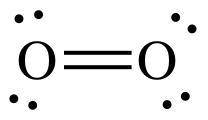
Chemistry, 05.05.2020 20:41 emblemhacks
Draw all of the Lewis structures of O2 which obey the octet rule and use this Lewis structure or these resonance structures to predict how many covalent bonds connect each oxygen atom in the real structure to the central O atom. Assume that the octet rule is followed for the O atom when you draw your structure(s). Pick the correct statement from the choices below. a) Each oxygen atom is connected to the central O atom with 1.67 covalent bonds. b) Each oxygen atom is connected to the central O atom with 1.33 covalent bonds. c) Each oxygen atom is connected to the central O atom with 2 covalent bonds. d) Each oxygen atom is connected to the central O atom with 1.5 covalent bonds. e) Each oxygen atom is connected to the central O atom with 1.25 covalent bonds.

Answers: 1


Other questions on the subject: Chemistry

Chemistry, 22.06.2019 13:00, naomicervero
Asubstance is a good conductor of electricity which of the following best explains a probable position of the substance in a periodic table
Answers: 3

Chemistry, 22.06.2019 13:30, hdhtvthjr
Which of the following natural processes is most likely to support the formation of an underwater sinkhole? a pollution buildup from deposited minerals b limestone cave collapsing due to changes in sea level c erosion of large amounts of sand moved by ocean waves d oxidation of rock formed by chemical weathering
Answers: 1

Chemistry, 22.06.2019 17:30, destineysarah
98 points you will be galileo perform the experiment to determine if objects with different mass fall at the same, or different, rates in the air and in a vacuum. before you conduct your experiment, you need to form a hypothesis. a hypothesis is a prediction of what you think will happen in the experiment. the hypothesis is a statement that describes “if” a certain set of circumstances are present “then” there will be a specific result that will occur. record your hypothesis here: record the results from step one of the experiment (dropping the objects in the air): first trial: second trial: third trial: record the results from step two of the experiment (dropping the objects in a vacuum): first trial: second trial: third trial: did the experiment support your hypothesis? using the data from your experiment, describe why you believe your hypothesis was either proven or disproven. what forces were acting on the objects dropped in the air? what force was acting on the objects dropped in the vacuum? part two: comparing forces choose two forces and compare and contrast these forces. you must provide two ways that they are alike and two ways that they are different. you may make a list, write in paragraph form, or make a chart. choose two forces and compare and contrast these forces. these must be different forces than used in the prior question. provide two ways that they are similar and two ways that they are different. you may make a list, write it out, or make a chart.
Answers: 3
You know the right answer?
Draw all of the Lewis structures of O2 which obey the octet rule and use this Lewis structure or the...
Questions in other subjects:

Mathematics, 13.08.2021 16:50


History, 13.08.2021 16:50

Health, 13.08.2021 16:50



History, 13.08.2021 16:50

Mathematics, 13.08.2021 16:50


Biology, 13.08.2021 16:50




